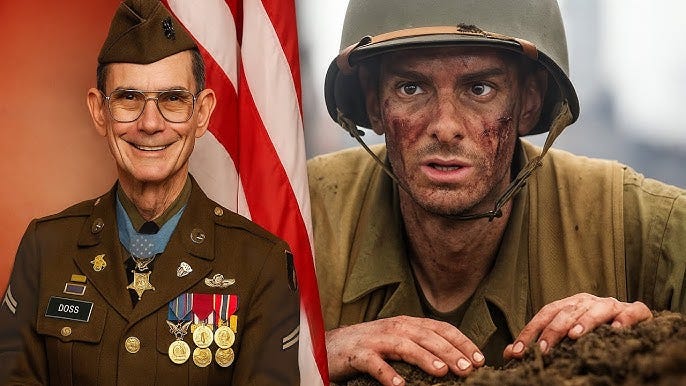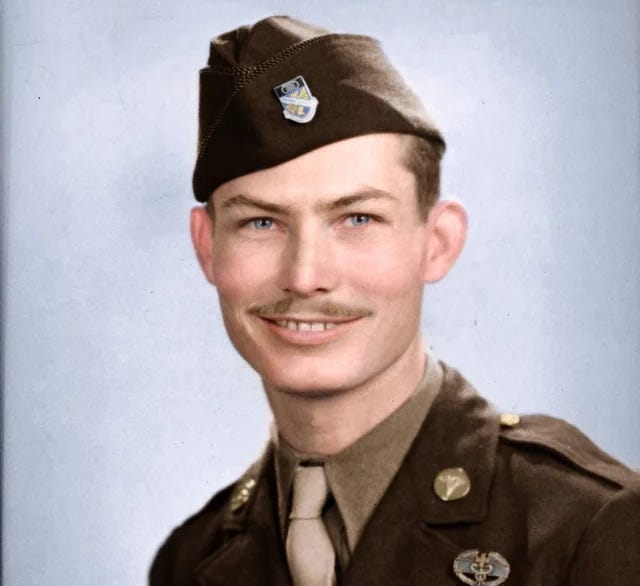The Unarmed Hero of World War II
Courage and faith under fire
When we think of heroism in war, we often imagine rifles, bombs, and charging lines, but Desmond Doss turned that idea on its head.
Unarmed, often alone, bound by conscience and faith, he saved the lives of dozens under fire. He remains the only conscientious objector in U.S. history to receive the Medal of Honor for combat valor.
His story is one of courage not only in battle, but of the kind forged in conviction…
Reminder: you can get tons of useful members-only content and support our mission for a few dollars per month 👇
Two full-length, new articles every single week
Access to the entire archive of useful knowledge that built the West
Get actionable principles from history to help navigate modernity
Support independent, educational content that reaches millions
Early Life and Foundations of Belief
Desmond Doss was born on February 7, 1919, in Lynchburg, Virginia, to William Thomas Doss, a carpenter and WWI veteran, and Bertha E. Oliver Doss, who worked in a shoe factory.
He grew up in a very devout Seventh-day Adventist family. His religious upbringing shaped deeply held beliefs: the Sabbath on Saturday, abstaining from killing, and living one’s faith through actions. He only finished part of high school and subsequently worked in a lumber company and later became a joiner at the Newport News shipyard in Virginia.
When the U.S. entered World War II, Doss was offered a deferment because of his shipyard work, which was common; but he felt compelled to serve. Not to fight, but to save lives.
Enlisting, Harassment, and Resolving to Serve Without a Weapon
Doss enlisted in the U.S. Army on April 1, 1942. He requested noncombatant status, refusing to carry a weapon on religious grounds, yet insisting on serving as a medic so he could help the wounded.
Basic training was a crucible. Fellow soldiers mocked him, accused him of cowardice, even threatened him. He was ostracized but refused to train with a rifle or to violate his Sabbath. But the army allowed him to observe his Saturday Sabbath and exempted him from weapons training.
Despite resistance, he was assigned as company aidman (medic) in Company B, 1st Battalion, 307th Infantry Regiment, 77th Infantry Division. He saw action in Guam, then the Philippines (notably Leyte), earning two Bronze Star Medals for valor before his legendary acts...
The Battle at Hacksaw Ridge (Maeda Escarpment), Okinawa
In late April 1945, Doss and the 77th Infantry Division were engaged in fierce combat in Okinawa. And in particular, over a rocky cliff known as the Maeda Escarpment (later popularly known as Hacksaw Ridge.)
It was around 400 feet high, jagged, and heavily defended. Between April 29 and May 21, 1945, Doss carried out extraordinary deeds under fire…







